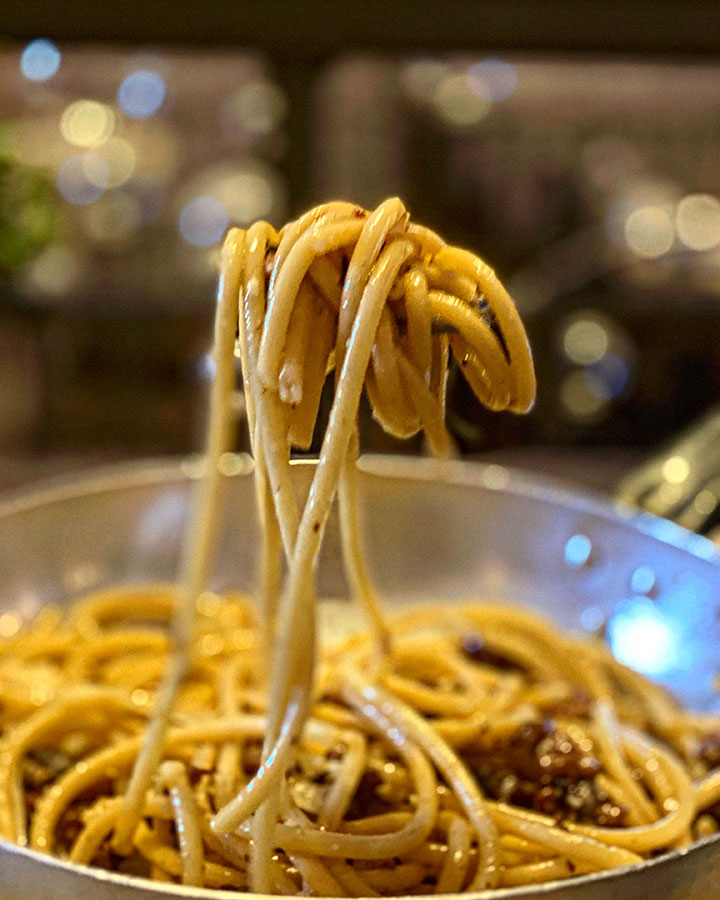Cacio e pepe con guanciale or amatriciana in bianco? Call it what you will...but GRICIA has earned a respectable place alongside its more famous cousins....
The dish is said to have been devised by shepherds, who during their long days of work used to carry with them, some so-called "poor", such as: lard, dry pasta, pecorino cheese and pepper. Some believe it comes from the locality of Grisciano, (in the province of Rieti) close by) Amatrice, or by Gricio, the retailer of bread and other foodstuffs, either from German regions or from the Switzerland, especially from the canton of the Grisons.The inhabitants of these areas, who are highly specialized in baking, a Rome were called "masters of art white" and jealously handed down their skills exclusively to their children and never to the Romans.Because they were morbidly attached to their work and avoided spending their money at Rome, i Grici spent most of their time locked inside their workshops, where they worked, ate and slept.A Rome, the term Griscium was used to refer to the gray duster that the Grici So as not to get smeared with flour.
The appellation was later used, with negative meaning, to remark on the neglect of the bakers' clothing under the duster.
Its only ingredients, in fact, are those available locally, offered by pastoralism and animal husbandry, easy to be transported by shepherds during transhumance, i.e., the pillow and the pecorino cheese.
We are waiting for you to taste our Gricia... it doesn't matter if with long or short pasta, the important thing is that it is accompanied by a good glass of Castelli Romani wine!
Enjoy your meal
V.

